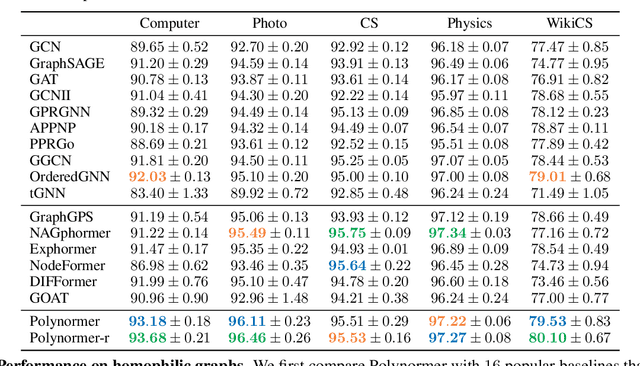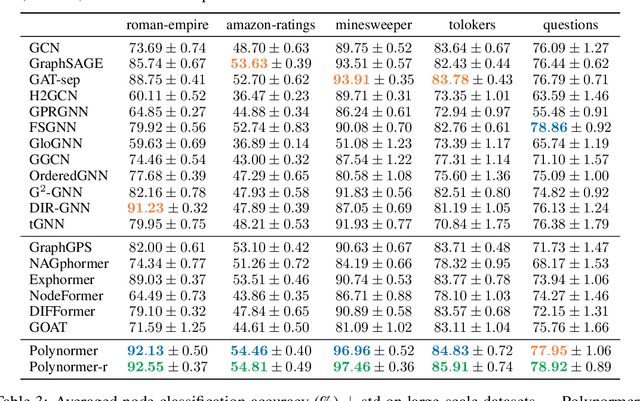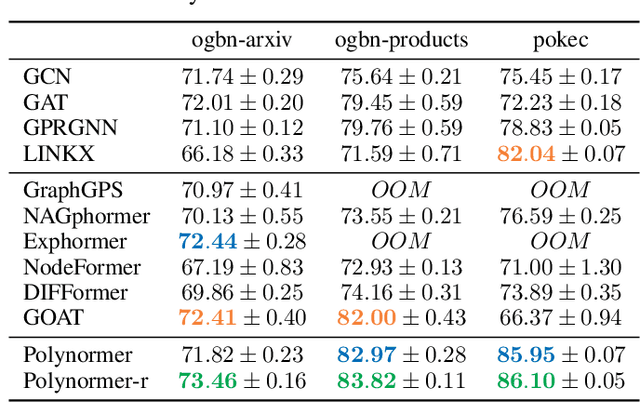Zichao Yue
Graph Learning at Scale: Characterizing and Optimizing Pre-Propagation GNNs
Apr 17, 2025Abstract:Graph neural networks (GNNs) are widely used for learning node embeddings in graphs, typically adopting a message-passing scheme. This approach, however, leads to the neighbor explosion problem, with exponentially growing computational and memory demands as layers increase. Graph sampling has become the predominant method for scaling GNNs to large graphs, mitigating but not fully solving the issue. Pre-propagation GNNs (PP-GNNs) represent a new class of models that decouple feature propagation from training through pre-processing, addressing neighbor explosion in theory. Yet, their practical advantages and system-level optimizations remain underexplored. This paper provides a comprehensive characterization of PP-GNNs, comparing them with graph-sampling-based methods in training efficiency, scalability, and accuracy. While PP-GNNs achieve comparable accuracy, we identify data loading as the key bottleneck for training efficiency and input expansion as a major scalability challenge. To address these issues, we propose optimized data loading schemes and tailored training methods that improve PP-GNN training throughput by an average of 15$\times$ over the PP-GNN baselines, with speedup of up to 2 orders of magnitude compared to sampling-based GNNs on large graph benchmarks. Our implementation is publicly available at https://github.com/cornell-zhang/preprop-gnn.
Less is More: Hop-Wise Graph Attention for Scalable and Generalizable Learning on Circuits
Mar 06, 2024Abstract:While graph neural networks (GNNs) have gained popularity for learning circuit representations in various electronic design automation (EDA) tasks, they face challenges in scalability when applied to large graphs and exhibit limited generalizability to new designs. These limitations make them less practical for addressing large-scale, complex circuit problems. In this work we propose HOGA, a novel attention-based model for learning circuit representations in a scalable and generalizable manner. HOGA first computes hop-wise features per node prior to model training. Subsequently, the hop-wise features are solely used to produce node representations through a gated self-attention module, which adaptively learns important features among different hops without involving the graph topology. As a result, HOGA is adaptive to various structures across different circuits and can be efficiently trained in a distributed manner. To demonstrate the efficacy of HOGA, we consider two representative EDA tasks: quality of results (QoR) prediction and functional reasoning. Our experimental results indicate that (1) HOGA reduces estimation error over conventional GNNs by 46.76% for predicting QoR after logic synthesis; (2) HOGA improves 10.0% reasoning accuracy over GNNs for identifying functional blocks on unseen gate-level netlists after complex technology mapping; (3) The training time for HOGA almost linearly decreases with an increase in computing resources.
Polynormer: Polynomial-Expressive Graph Transformer in Linear Time
Mar 02, 2024



Abstract:Graph transformers (GTs) have emerged as a promising architecture that is theoretically more expressive than message-passing graph neural networks (GNNs). However, typical GT models have at least quadratic complexity and thus cannot scale to large graphs. While there are several linear GTs recently proposed, they still lag behind GNN counterparts on several popular graph datasets, which poses a critical concern on their practical expressivity. To balance the trade-off between expressivity and scalability of GTs, we propose Polynormer, a polynomial-expressive GT model with linear complexity. Polynormer is built upon a novel base model that learns a high-degree polynomial on input features. To enable the base model permutation equivariant, we integrate it with graph topology and node features separately, resulting in local and global equivariant attention models. Consequently, Polynormer adopts a linear local-to-global attention scheme to learn high-degree equivariant polynomials whose coefficients are controlled by attention scores. Polynormer has been evaluated on $13$ homophilic and heterophilic datasets, including large graphs with millions of nodes. Our extensive experiment results show that Polynormer outperforms state-of-the-art GNN and GT baselines on most datasets, even without the use of nonlinear activation functions.
Understanding the Potential of FPGA-Based Spatial Acceleration for Large Language Model Inference
Dec 23, 2023



Abstract:Recent advancements in large language models (LLMs) boasting billions of parameters have generated a significant demand for efficient deployment in inference workloads. The majority of existing approaches rely on temporal architectures that reuse hardware units for different network layers and operators. However, these methods often encounter challenges in achieving low latency due to considerable memory access overhead. This paper investigates the feasibility and potential of model-specific spatial acceleration for LLM inference on FPGAs. Our approach involves the specialization of distinct hardware units for specific operators or layers, facilitating direct communication between them through a dataflow architecture while minimizing off-chip memory accesses. We introduce a comprehensive analytical model for estimating the performance of a spatial LLM accelerator, taking into account the on-chip compute and memory resources available on an FPGA. Through our analysis, we can determine the scenarios in which FPGA-based spatial acceleration can outperform its GPU-based counterpart. To enable more productive implementations of an LLM model on FPGAs, we further provide a library of high-level synthesis (HLS) kernels that are composable and reusable. This library will be made available as open-source. To validate the effectiveness of both our analytical model and HLS library, we have implemented BERT and GPT2 on an AMD Alveo U280 FPGA device. Experimental results demonstrate our approach can achieve up to 16.1x speedup when compared to previous FPGA-based accelerators for the BERT model. For GPT generative inference, we attain a 2.2x speedup compared to DFX, an FPGA overlay, in the prefill stage, while achieving a 1.9x speedup and a 5.7x improvement in energy efficiency compared to the NVIDIA A100 GPU in the decode stage.
 Add to Chrome
Add to Chrome Add to Firefox
Add to Firefox Add to Edge
Add to Edge